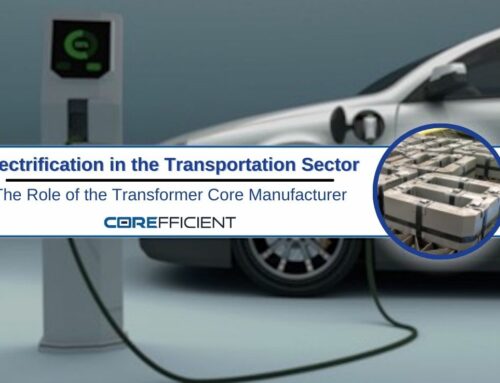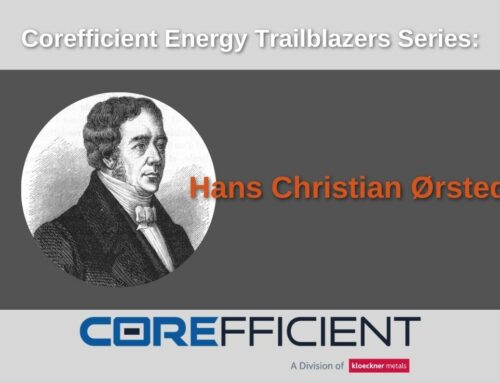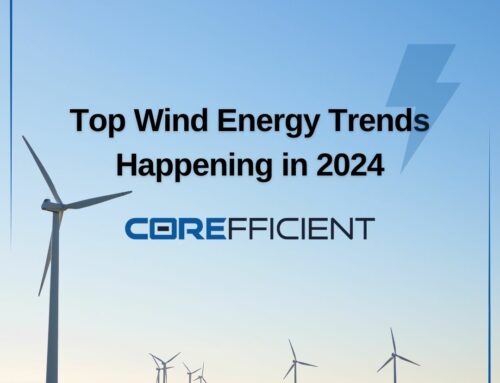At Corefficient, we know that due to an increase in the development of rural areas, industrialization, and the opening of new generation plants, the transformer marketplace is growing. We believe that the best consumer is an informed consumer. We wanted to take some time to define some of the basic elements and principles of electrical transformers, transformer cores, and how they are used in the world.
Transformer Cores and Types of Transformer Cores Defined
A transformer core is a static device that transmits power from one source to another through electromagnetic induction. These are pieces of magnetic material with a high magnetic permeability, which is used to guide magnetic fields in transformers. Transformer cores are made of different materials, and there are several different types. Here are some specific examples and how they work:
- Steel Laminated Cores: These types of transformer cores are known for their permeability, which reduces magnetizing current and makes them suitable option to use in transmitting voltage in the audio frequency level.
- Solid Cores: These have the highest magnetic permeability and electrical resistance. They tend to use an electrical transmission, where the frequency is high and requires smooth and safe performance. These types of cores are solid in nature and have a long-serving life.
- Toroidal Cores: These are used as an inductor in electric circuits because of their circular design; they are effective and efficient in handling a high level of energy load.
Transformers and Types of Transformers Defined
There are also different types of transformers, which have multiple coils or windings on the primary and secondary sides. They can also be “center tapped,” meaning two coils are connected in a series. Transformers are constructed in order to convert the voltage level on the primary side to the secondary side. There are three types of transformers: step down, step up, and isolated transformer.
- Step Down Transformer: A step down transformer converts the higher voltage to a lower voltage across the secondary output. The number of windings is higher across the secondary side than the primary side. These types of transformers are primarily used in electronics; it is a requirement for the power section of any electrical equipment.
- Step Up Transformer: Logically, a step-up transformer is the opposite of a step down transformer. They increase the low primary voltage to a high secondary voltage. Step up transformers can be used in electronics as well, including stabilizers and inverters. Step up transformers are also used in electrical power distribution, often “stepping up” the voltage in a power grid before distribution.
- Isolated Transformer: An isolated transformer does not convert voltage levels, rather the voltage levels of the primary and secondary sides stay the same. It as an isolation barrier where the conduction happens only with the magnetic flux, generally for safety purposes and to cancel noise transfer from primary to secondary or vice-versa.
Types of Magnetic Core Materials for Transformers
Electrical power transformer features primary, secondary, and tertiary windings. It is then driven by the flux between the windings. Magnetic cores serve as the pathway of the flux. The core can be made from the following types of materials:
- Amorphous Steel: These cores are made from several paper-thin metallic tapes, which help reduce the flow of eddy currents. Amorphous steel cores have few losses and can easily operate at high temperatures. The amorphous steel cores are most commonly used in high efficiency transformers that operate at medium frequencies.
- Solid Iron Core: These cores provide magnetic flux, which helps retain high magnetic fields without iron saturation. The cores are not recommended for transformers operating at AC applications because large eddy currents are produced by the magnetic field. These eddy currents produce heat at high frequencies.
- Amorphous Metals: Otherwise known as vitreous metals, these metals are glassy or non-crystalline. These metals are used for creating high-performance transformers. The materials have low conductivity, which helps reduce eddy currents.
- Ferrite Ceramics: Ferrite ceramics are a class of ceramic compounds made from iron oxide and one or multiple metallic elements. These ferrite ceramic magnetic cores are used in high-frequency applications. Ceramic materials serve as efficient insulators and help decrease eddy currents.
- Laminated Magnetic Cores: These cores feature thin iron sheets covered with an insulating layer that prevent eddy currents.
- Carbonyl Iron Cores: These magnetic cores are made from powdered carbonyl iron and provide stable service across a wide range of magnetic flux and temperature levels. The carbonyl iron powder cores feature small iron spheres coated with a thin insulating layer. These cores help reduce the effects of eddy currents at high temperatures.
- Silicon Steel: Silicon steel has high electrical resistivity. The silicon steel core provides stable performance over many years and offers high saturation flux density.
Energy transformation, power grids, and transformer cores
The most obvious application of the electrical transformer is in power distribution in a transmission line: from power plant, to step up transmission, to step down transmission. At the power station (or, generating plant) energy from coal, gas, water, nuclear, wind, solar, etc. is transformed into electrical energy. The power plant is connected to the transmission grid, which, in turn, is connected to the distribution grid. A transmission grid is a high-voltage network for long-distance electric power transmission. A distribution grid is a medium- and low-voltage network for local distribution of electric power to end-users.
Usually the grid contains many substations that are connected to one another via transmission lines. These substations contain protective equipment that, in case of problems, can automatically operate circuit breakers, rerouting power within the grid.
At Corefficient, in order to ensure top quality transformer cores, we offer electrical steel material testing, including Epstein Testing, Single Sheet Testing, Franklin Testing, and Dimensional Testing. We also offer assembled core electrical testing.
Corefficient is a transformer core company based out of Monterrey, Mexico – committed to adding value to their transformer core products. Combining experience and success in the fields of transformer core engineering, transformer core design, magnetic core expertise, and – most importantly – customer service. Ready to start? Contact Corefficient’s sales engineer today at: 1 (704) 236-2510.










